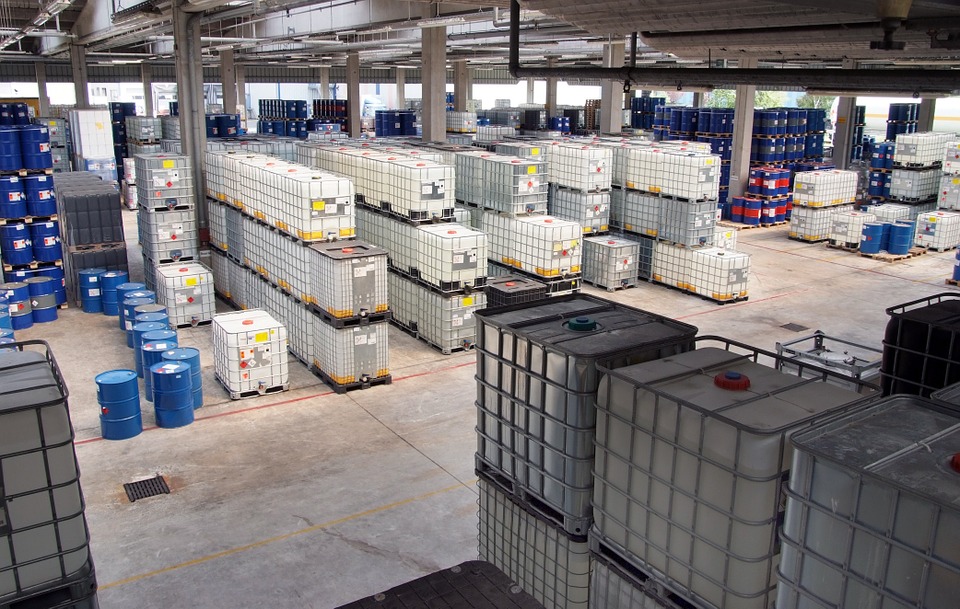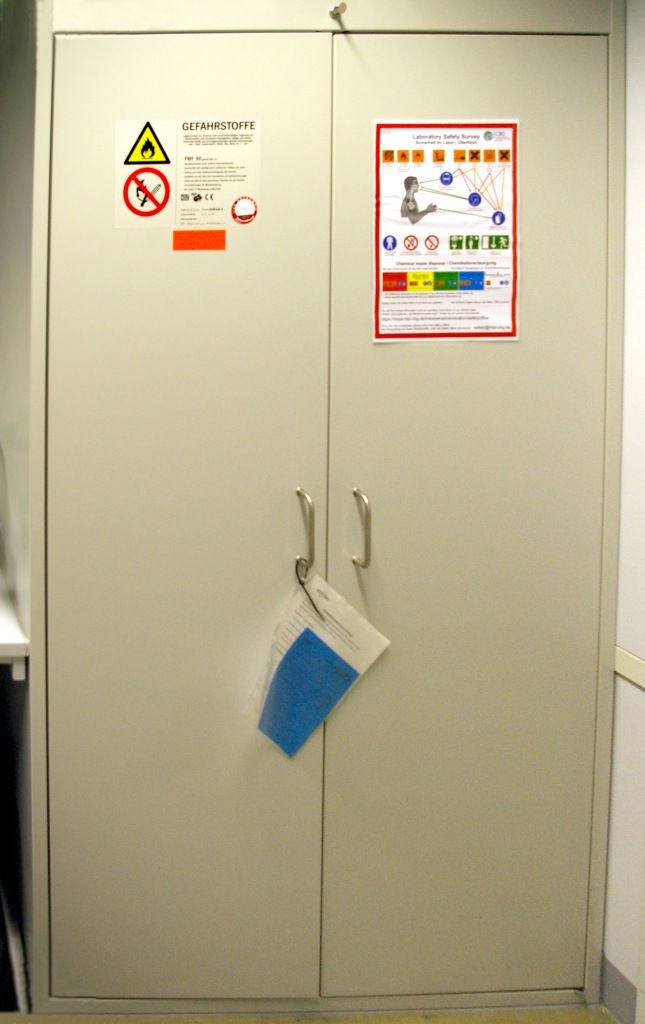Storage
What is chemical storage?
Safe storage of chemicals requires that companies are aware of their hazardous properties, in particular those that contribute to fire and explosion. Safety Data Sheets (SDS) include important (additional) information to implement safe and proper chemical storage.
A concept for chemicals storage represents an overview of all aspects of chemical storage.
- storage area requirements and maintenance,
- fire protection measures,
- labelling of chemical substances and storage facilities,
- chemical segregation by chemical group,
- specific chemical storage requirements,
- keeping necessary chemical information up to data and at place,
- SDSs,
- chemical inventory and other necessary documents,
- training of workers.
Furthermore, transportation of chemicals within the company (and to their storage areas) is also an activity, which could be relevant regarding safety, in particular if large amounts of chemicals are moved.

 Risks mainly arise, when chemical substances are released as a result of a leakage, i.e. if containers are old or subject to destruction due to oxidation. In addition, accidents or incidents in storage areas, e.g. when refilling or moving chemicals may cause problems. Finally, fire in storage places can be a cause of increased safety risks from chemicals.
Risks mainly arise, when chemical substances are released as a result of a leakage, i.e. if containers are old or subject to destruction due to oxidation. In addition, accidents or incidents in storage areas, e.g. when refilling or moving chemicals may cause problems. Finally, fire in storage places can be a cause of increased safety risks from chemicals.
Hazards posed by chemical substances and the occurrence of accidents and incidents can be minimized if chemical storage rules are followed!
Furthermore, requirements for storage facilities are also important and should be followed.
There are some additional considerations for large scale storage.
Chemical labelling, SDS and other relevant documentation
All chemicals must be labelled according to the EU classification and labelling legislation (CLP - EC 1272/2008) in order to warn about their hazards. In addition to the CLP labels indicating hazards (examples) there is a labelling system indicating transportation requirements (examples). Classification and labelling of hazardous substances for transportation is also a part of GHSand it is laid out in the UN Recommendation on the Transport of Dangerous Goods.
According to REACHArticle 31 and REACH Annex II, the requirements for chemicals storage are to be described in Section 7 of the safety data sheets (SDS) (precautions and safe handling). This should include all aspects of storage rooms and their facilities and safety precautions. If necessary, recommendations on how to manage risks related to: explosive atmospheres, corrosive conditions, flammability hazards, change of weather conditions and accidental release measure are to be listed. All of this information has to correspond to the substance's physical and chemical properties listed in Section 9 of the SDS. The SDSs should kept at an accessible location in proximity to the storage room.
General requirements for storage of chemicals with specific properties
1) All chemicals should be properly labellingand a proper segregation planshould be developed. Knowing exactly where and what chemicals are kept and knowing their expiry dates is essential in maintaining chemical safety. Orderly accountingis therefore a must in chemical management.
Segregate chemicals that are incompatible with each other in order to avoid any possible cause of explosion, fire, formation of toxic fumes, etc., when accidentally combined. For more information about storage requirements see Segregation of chemicals.
If the amount of stored hazardous chemicals exceed certain thresholds, additional requirements regarding emergency plans, communication with authorities and the general public etc. need to be followed according to the Seveso Directive. Taking precautions can prevent serious disasters and therefore, loss of human life. Learn more how to be prepared if such an event occurs.
In conclusion
Implementing chemical safety provisions in storage of chemicals is essential to protect human health and environmental safety and prevent (major) damage to property. A structured approach to storage will save time and allow better planning resulting in reduced costs for chemicals management.
Furthermore, phasing out orsubstitutinghazardous substances is another way to achieve less risks and hence easier chemicals storage.
This text is a summary of guidelines for chemical safety. It is not an official document. For the company use, please refer to official documents or national guidelines.
More information:
- SDS compilation guidelines
- More information on chemical storage in warehouses
-
EU-OSHA (European agency for safety and health at work) chemical storage guidelines